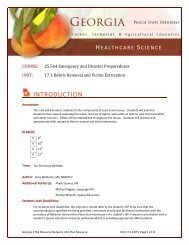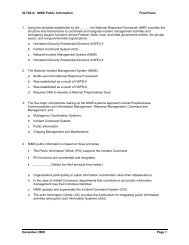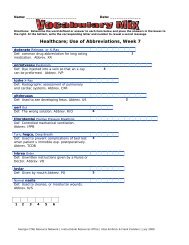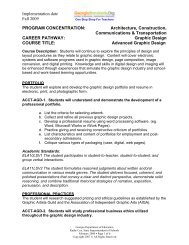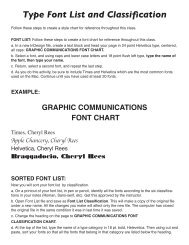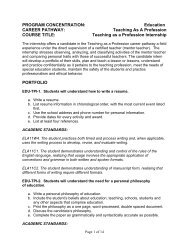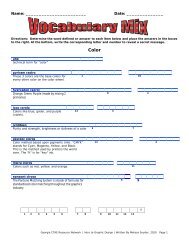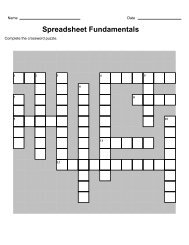emt-basic curriculum module 4
emt-basic curriculum module 4
emt-basic curriculum module 4
You also want an ePaper? Increase the reach of your titles
YUMPU automatically turns print PDFs into web optimized ePapers that Google loves.
State of WisconsinEMT-Basic: A Practice BasedApproach to EMS EducationVII.VIII.IX.1. Appearance2. Activity3. Speech4. Orientation for time, person, and placeAssessment of Potential ViolenceA. Scene size-upB. History - the EMT-Basic should check with family and bystanders todetermine if the patient has a known history of aggression orcombativenessC. Posture - stands or sits in a position which threatens self or others.May have fists clinched or lethal objects in hands.D. Vocal activity - is yelling or verbally threatens harm to self or othersE. Physical activity - moves toward caregiver, carries heavy orthreatening objects, has quick irregular movements, muscles tense.Methods to Calm Behavioral Emergency PatientsA. Acknowledge that the person seems upset and restate that you arethere to helpB. Inform him of what you are doingC. Ask questions in a calm, reassuring voiceD. Maintain a comfortable distanceE. Encourage the patient to state what is troubling himF. Do not make quick movesG. Respond honestly to patient's questionsH. Do not threaten, challenge or argue with disturbed patientsI. Tell the truth, do not lie to the patientJ. Do not "play along" with visual or auditory disturbances of the patientK. Involve trusted family members or friendsL. Be prepared to stay at scene for a long time. Always remain with thepatient.M. Avoid unnecessary physical contact. Call additional help if needed.N. Use good eye contactRestraining Patients - restraint should be avoided unless patient is a dangerto self and others. When using restraints have police present, if possible, andget approval from medical direction. If restraints must be used, do thefollowing:A. Be sure to have adequate helpB. Plan your activitiesC. Use only the force necessary for restraintD. Estimate range of motion of patient’s arms and legs and stay beyondrange until readyE. Once decision has been made - act quicklyF. Have one EMT-Basic talk to patient throughout restrainingG. Approach with four persons, one assigned to each limb all at the sametimeH. Secure limbs with equipment approved by medical direction1. Soft restraints are preferredModule 4-87



